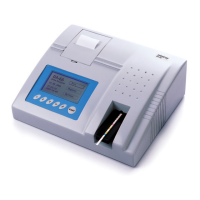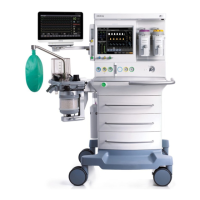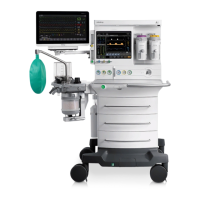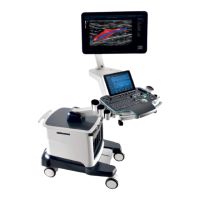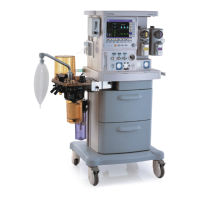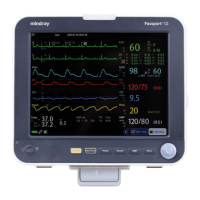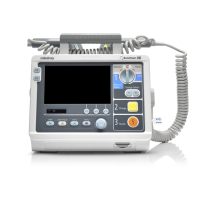D-1
D Alarm Messages
This chapter lists only the most important physiological and technical alarm messages. Some
messages appearing on your monitor may not be included.
In this chapter:
The “I” column indicates how indications of technical alarms perform after the alarm
system is reset: “A” means that some technical alarms are cleared; “B” indicates that
some technical alarms are changed to the prompt messages; and “C” indicates that a “Ĝ”
appears before the alarm message,
appears in the alarm symbol area, and the
indication of the alarm lamp depends on the alarm light setting. Refer to 7.8 Resetting
Alarms for details.
The “L” field indicates the alarm level: H means high, M means medium and L means
low. “*” means the alarm level is user-adjustable.
XX represents a measurement or parameter label, such as ECG, NIBP, HR, ST-I, PVCs,
RR, SpO
2
, PR, etc.
In the “Cause and Solution” column, corresponding solutions are given instructing you to
troubleshoot problems. If the problem persists, contact your service personnel.
D.1 Physiological Alarm Messages
Measurement Alarm messages L Cause and solution
XX
XX Too High M* XX value has risen above the high alarm
limit or fallen below the low alarm limit.
Check the patient’s condition and check if
the patient category and alarm limit settings
are correct.
XX Too Low M*
ECG
ECG Weak Signal H
The ECG signal is so weak that the monitor
can’t perform ECG analysis. Check the
patient’s condition and the ECG
connections.
Asystole H
Arrhythmia has occurred to the patient.
Check the patient’s condition and the ECG
connections.
VFib/VTac H
Vtac H
Ven t . B r a d y H
Extreme Tachy H
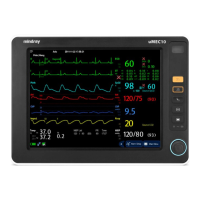
